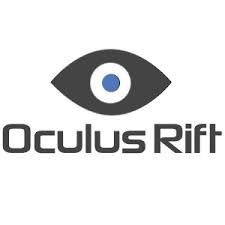One of the biggest things to hit virtual worlds is the idea of being able to experience it in the immersive Virtual Reality, or VR. High Fidelity is open source software for shared Virtual Reality, and they are the first to move forward with this technology in the virtual world environment. Second Life 3, or whatever it is going to be called, is going to be geared toward that kind of technology also, using the still rather clunky VR headsets such as Oculus Rift. While we are still in the early stages of the development of this technology, it is exciting to watch it grow and develop.
It was announced yesterday in an article posted on the techcrunch.com website, that High Fidelity, the San Francisco-based startup from Second Life founder Philip Rosedale, has raised another $11 million in funding in a round led by Paul Allen’s Vulcan Capital. The funding was noted in a SEC filing recently, and was confirmed to the TechCrunch website by Rosedale himself. Hi Fidelity is clearly a forerunner and a big player in this exciting, developing technology.
I’m quoting directly from the article below. But you can find the original posting by clicking on this link: Hi Fidelity Raises $11M
“Founded in 2013, High Fidelity is building deployable virtual worlds, combining the ease of rolling out a VM instance on a modern cloud platform with the interactivity of Minecraft and the immersion of virtual reality. Over the course of several hours at High Fidelity HQ yesterday, Rosedale demonstrated the state of the startup’s tech and the vision he has for turning it into a viable business.
“The main idea driving High Fidelity forward is the ability to quickly generate a virtual space to meet in and interact with. While the interface is far from final, it’s already at the point where you can pick a template, choose a name, and instantly have a space accessible by others. Each space is essentially a small video game world, filled in with the same 3D models you’d build for a game built with Unity.
“The startup has built enough logic that you can jump in with friends, have a quick virtual chat, and interact with the virtual space. If you want more stuff to do, you can grab or sculpt your own models and create logic in JavaScript to tell the world how interaction should work. Rosedale showed off this capability by dropping a billiards table he’s been working on in his free time into a world. Using two Razer Hydra controllers, you could pick up balls, roll them around, or throw them at one another and see them react with realistic physics. Similarly, the studio has invested a ton of time into naturalistic facial/gesture capture and 3D audio, making it the closest thing to the ideal virtual reality chatroom.
“If you can code it, you can build basically anything into High Fidelity’s worlds. Between alpha users and the team’s developers messing around in their own time, people have built procedurally generated cities and AI-powered animals that wander around realistically — and that’s just scratching the surface of what’s possible.
“As with Second Life, High Fidelity doesn’t plan to sell you a one-time license in exchange for unlimited play. In fact, the base of the experience is open source, letting anyone host worlds on their own machines with less of a hassle than even the kid-friendly Minecraft.
“Rosedale plans to monetize High Fidelity at the points where the community provides value to itself. While you can generate a temporary name to send to friends so they can quickly jump into a world with you, you’ll also be able to pay a fee to keep a distinct name for longer-term use — kind of like reserving a good URL for your site or username on Twitter.
“Since users can make all kinds of content for their worlds, High Fidelity also wants to host the go-to repository for models and code in a digital store resembling Unity’s Asset Store. Given the product’s open source approach, generous users can give out their offerings for free if they’d like, but if they want to charge money, High Fidelity will take a small cut.
“As I’ve noted before, advertising is probably going to be common in virtual reality. Some might hear that and groan, but in “contemporary” virtual settings, ads done right can actually contribute to immersion. Rosedale says the startup is looking to make ads not only feel natural in High Fidelity, but helpful: while there might be ads for “real” products on in-game televisions or billboards down the road, in the near-term you’re more likely to see ads for cool objects you can pick up from the asset store.
“Virtual reality allows for an infinite range of experiences, and the studios and hobbyists working on content for headsets from market leaders Oculus and Samsung have barely touched on what’s possible. For now, the majority of development in the space happens in traditional game engines like Unity and Unreal. High Fidelity’s deployable worlds put it somewhere between those professional tools and the most customizable video games, opening up innovation in the space to those who are willing to get technical but don’t want to build something from the ground up.:
We are on the cusp of some exciting developments!
I remain respectfully yours,
~ Suzanne Piers, ZoHa Islands Social Media

